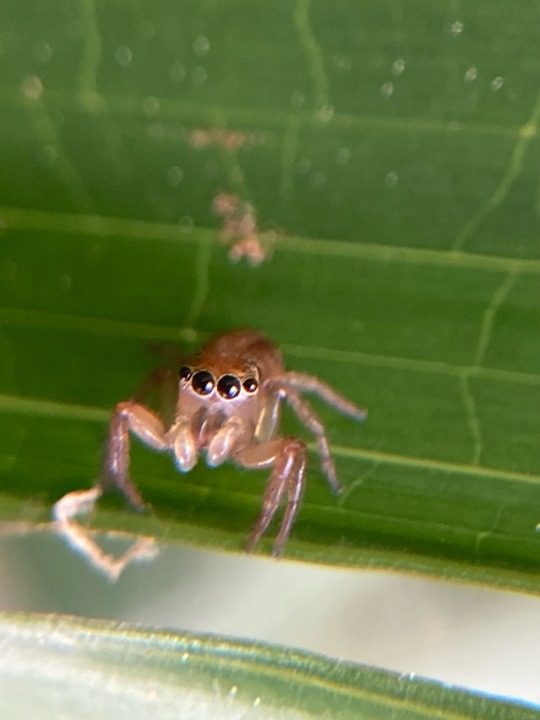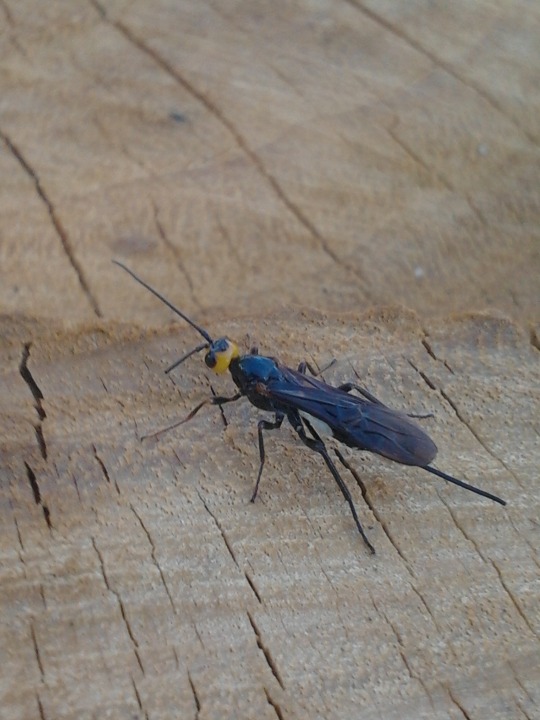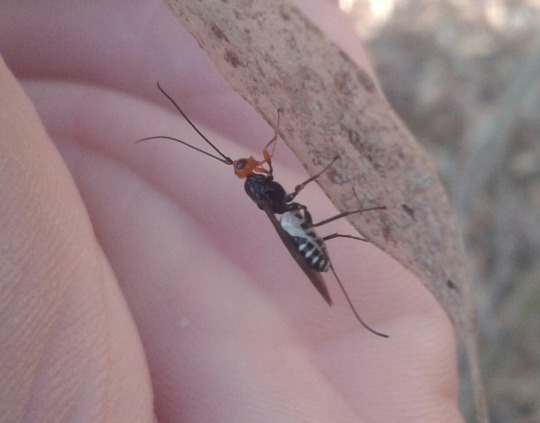#callibracon
Text


little jumping spider (prostheclina) and the braconid wasp (callibracon) several times its size that it tried and failed to eat. the wasp didn't even fly away
25 notes
·
View notes
Text
#2038 - Callibracon sp.

Photo by Patrick Wake.
Callibracon wasps are widespread in Australian, and tend to come in variations of black, white, red and yellow. At least some are known to be parasitoids of Eucalyptus Longicorn Beetles in the genus Phoracantha.
1 note
·
View note
Text
Cooleenup Island Species List 2023 -Hymenoptera
June 9th to 11th
12C-18.5C, 2.4mm-12.5mm rain, strong wind on Sunday
(19-20 spp.)
Sceliphron laetum
Sceliphron formosum
Callibracon sp.
Unidentified Braconid 1 sp.
Unidentified Ichneumonid (Subf. Labeninae)
Unidentified Aulacid 1 sp.
2 other unidentified parasitoids
Eucalyptus leaf-blister sawfly Phylacteophaga froggatti
Camponotus peseshus
Crematogaster laeviceps
Dolichoderus ypsilon
Iridomyrmex purpureus
Iridomyrmex discors
Iridomyrmex sp.
Myrmecia gratiosa
Myrmecia sp. (gulosa species-complex)
Pheidole alate
Rhytidoponera inornata
2? other unidentified ant spp.
0 notes
Text
#736 - A Third Callibracon

From the same logs, but a different colour, size, and markings to the other two.
Baldivis, Perth
5 notes
·
View notes
Text
#735 - Another Callibracon

This one with a yellow head and mostly straight ovopositor.
Baldivis, Perth, investigating freshly cut logs.
20 notes
·
View notes
Text
#734 - Callibracon sp. - White-flanked Longicorn Parasitoids

A strikingly coloured Braconid wasp from the Wellard Wetlands. These are the wasps that the Neoraphiomidas fly, and the Helopeltis bugs, who I have covered before, are mimicking in self-defense. Which is odd, since Braconids don’t sting, making it a double bluff. They use their ovopositor on longicorn beetle larvae, however.
Most braconids are parasitoids on other insects, especially upon the larval beetles, flies, and moths, but also some hemimetabolous insects such as aphids, Heteroptera, or Embiidina. Most species kill their hosts, though some cause the hosts to become sterile and less active. Those species that parasitise the host internally often display elaborate adaptations to improve larval survival including polydnaviruses to compromise the host’s immune system, instead of a venom cocktail. The wasp’s DNA contains templates for the components of the viral particles, and they are assembled in an organ in the female's abdomen known as the calyx. A 2009 study traced these templates to a 100-million-year-old viral infection. Through the evolutionary history of the wasps, these viruses have become so modified that they no longer resemble any other known viruses today.
Members of two subfamilies are known to form galls on plants.
Some Braconids appear to be very resistant to ionizing radiation. While a dose of 400 to 1000 rads can kill a human, a dose of 180,000 rads was required to kill a Hadrobracon.
8 notes
·
View notes